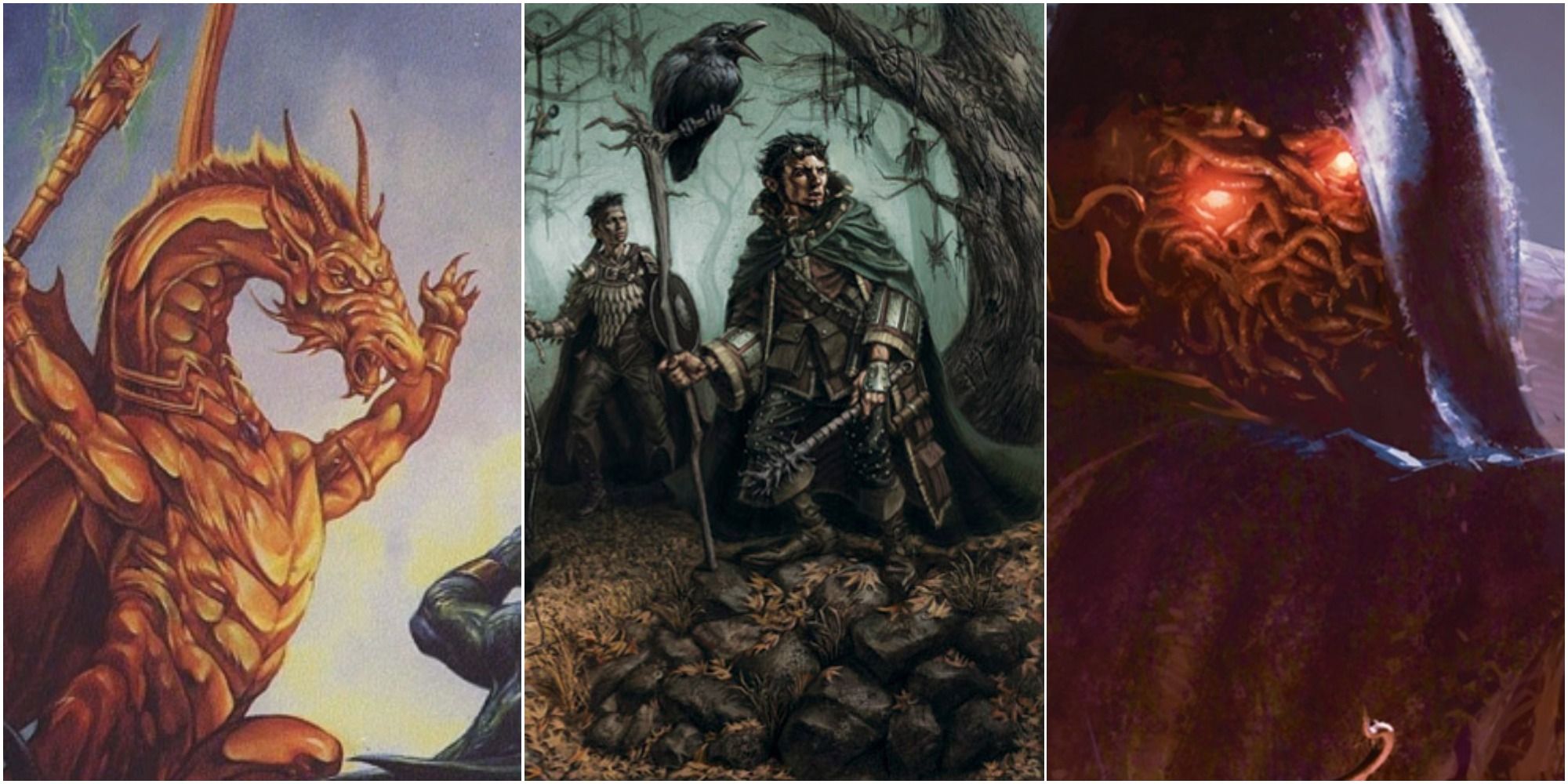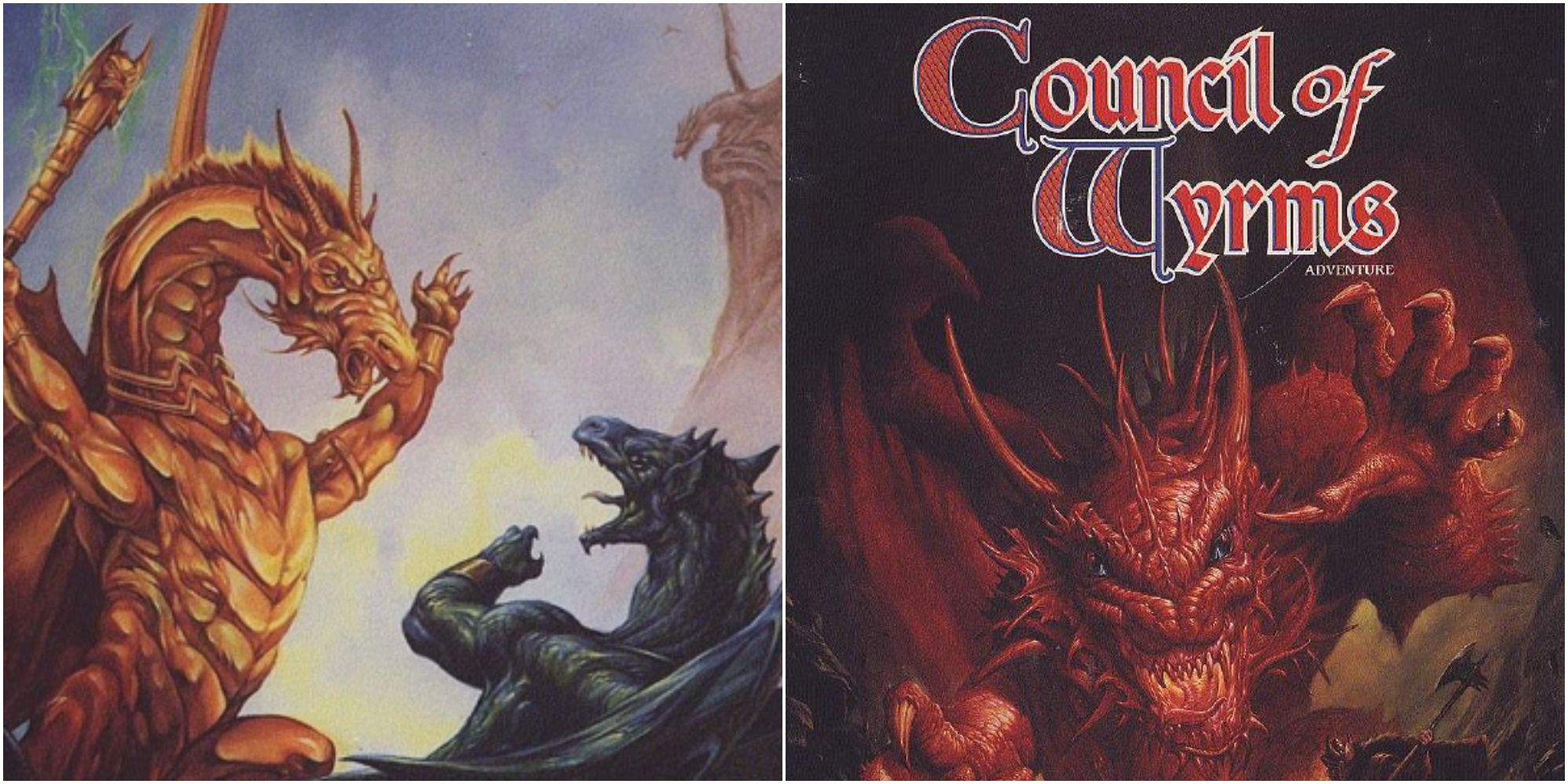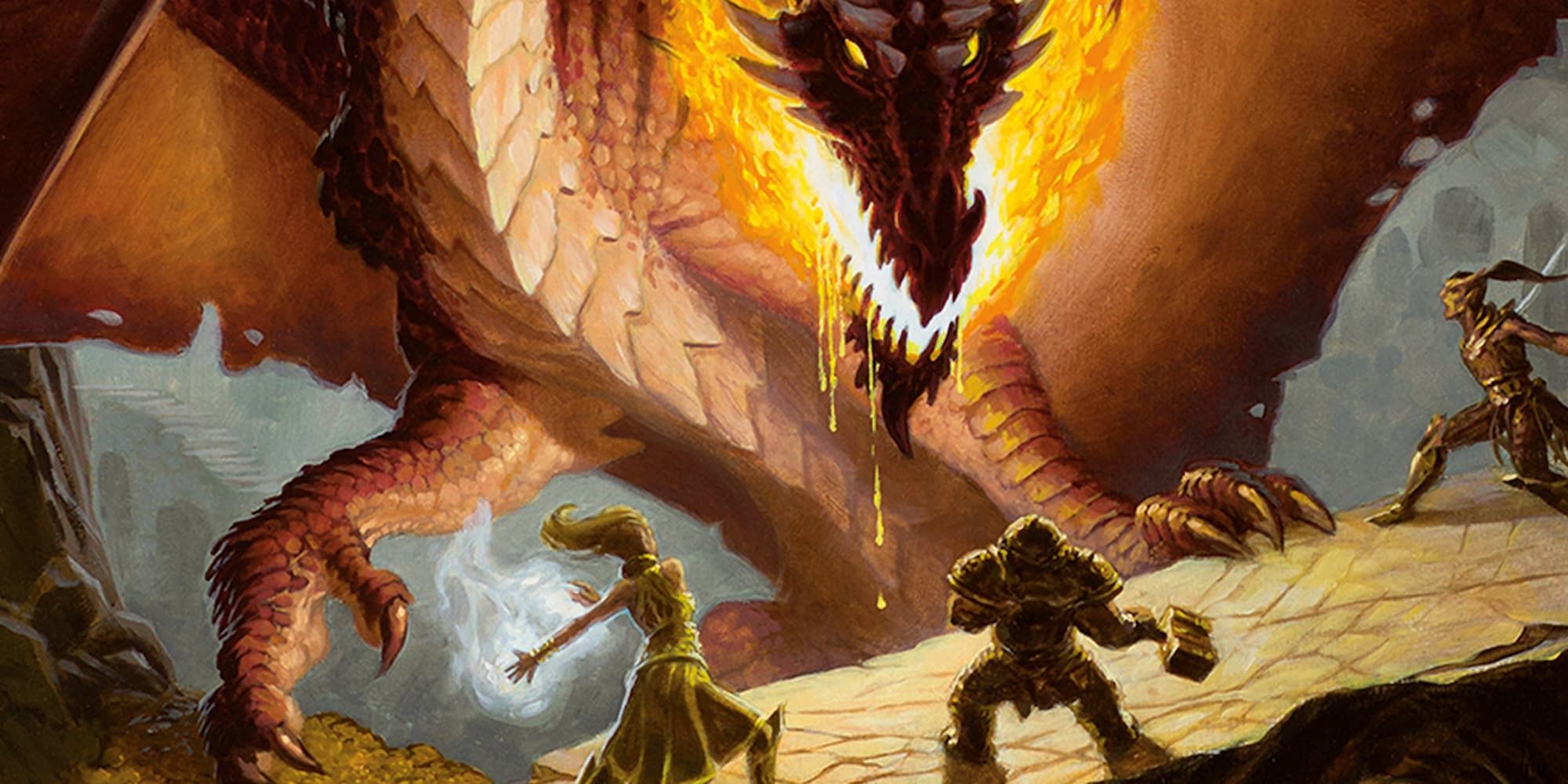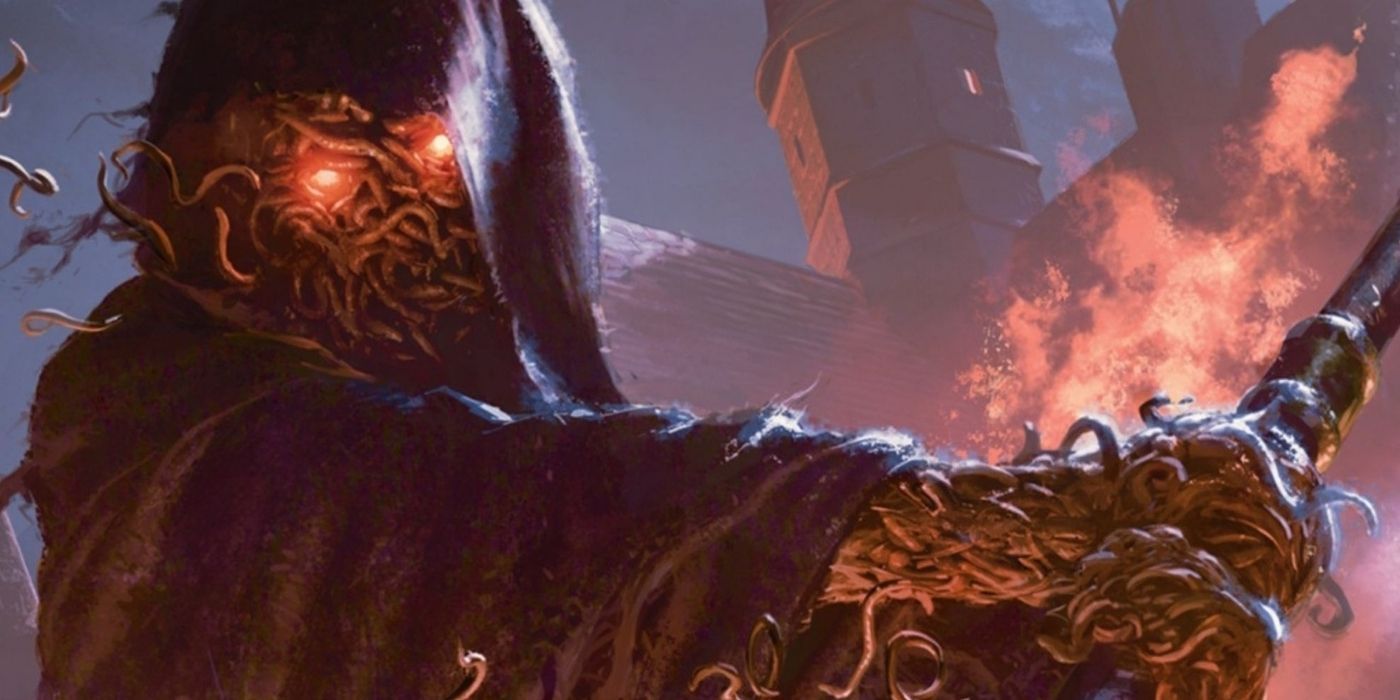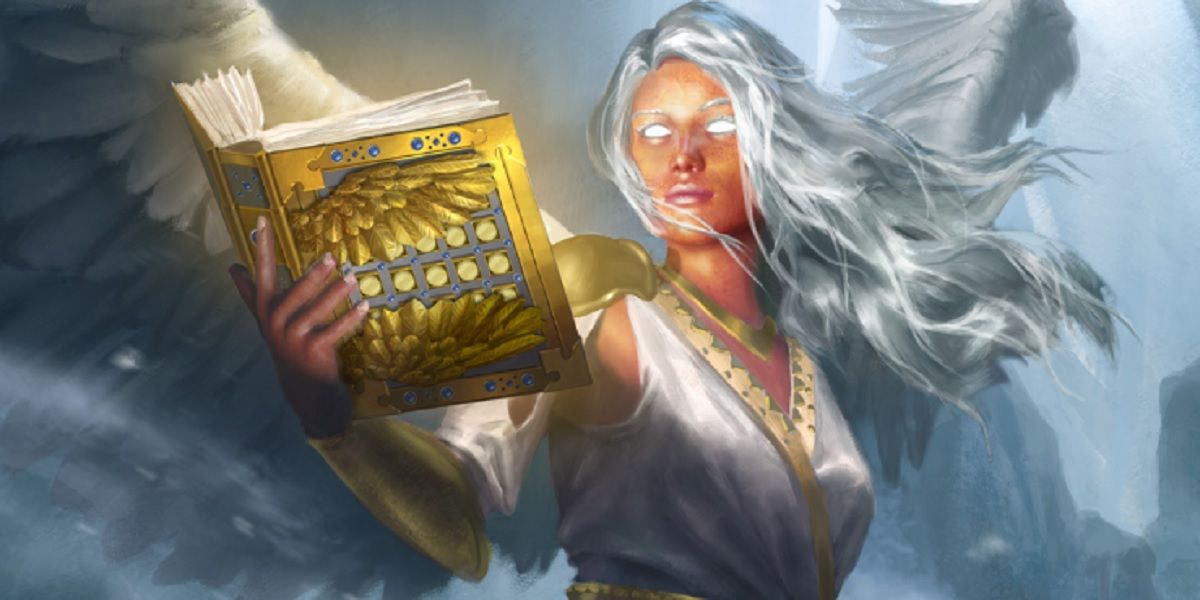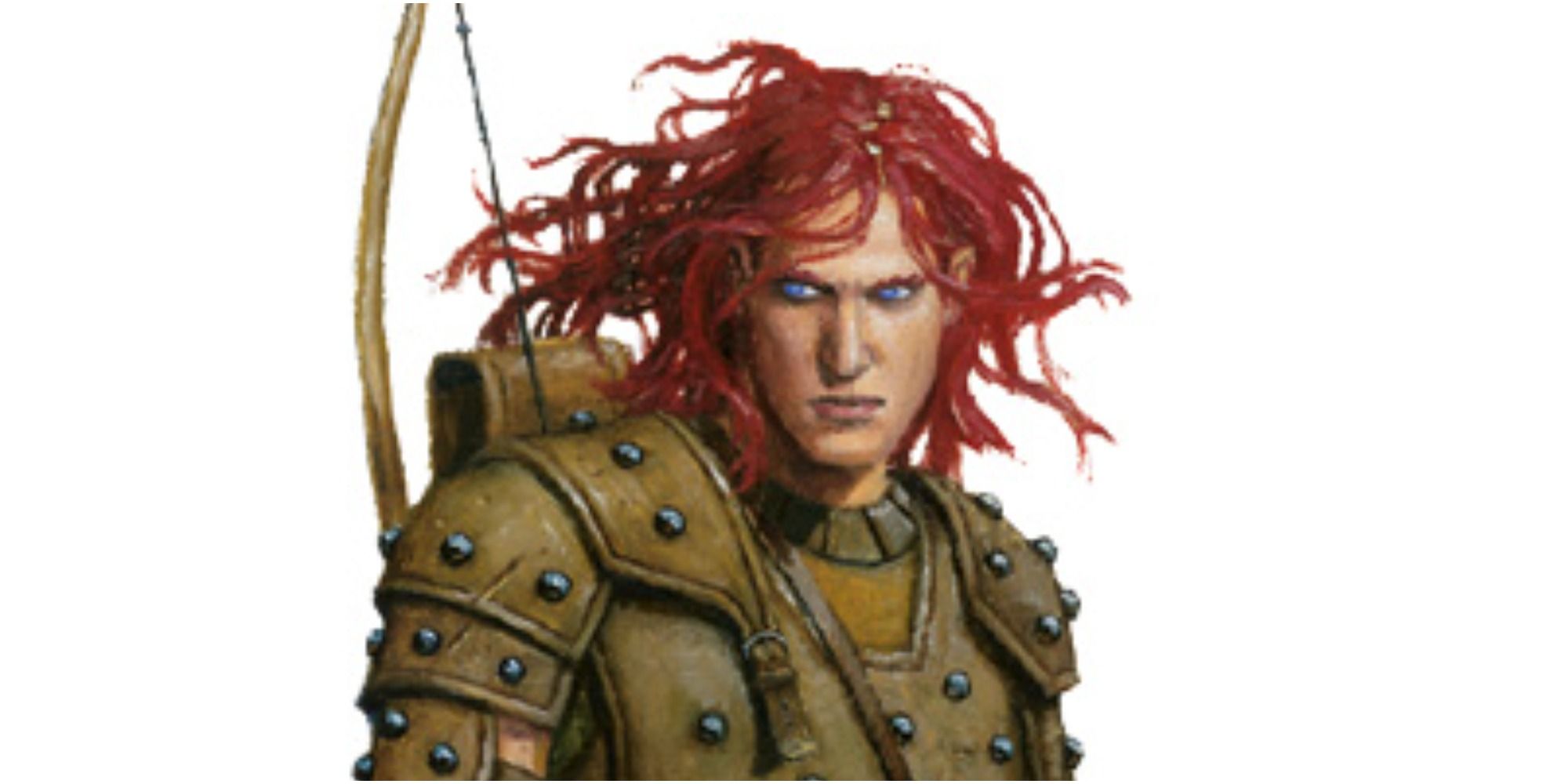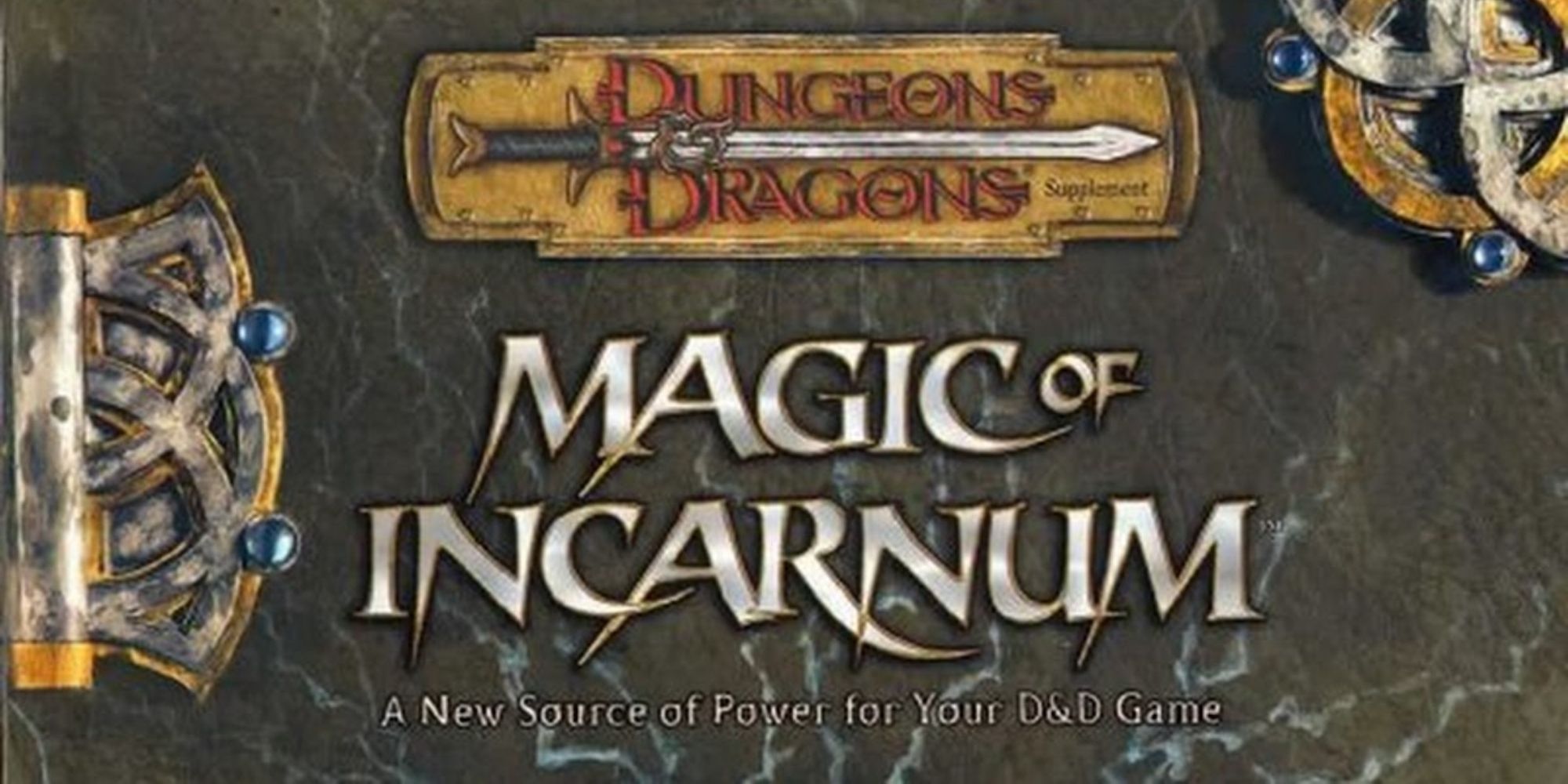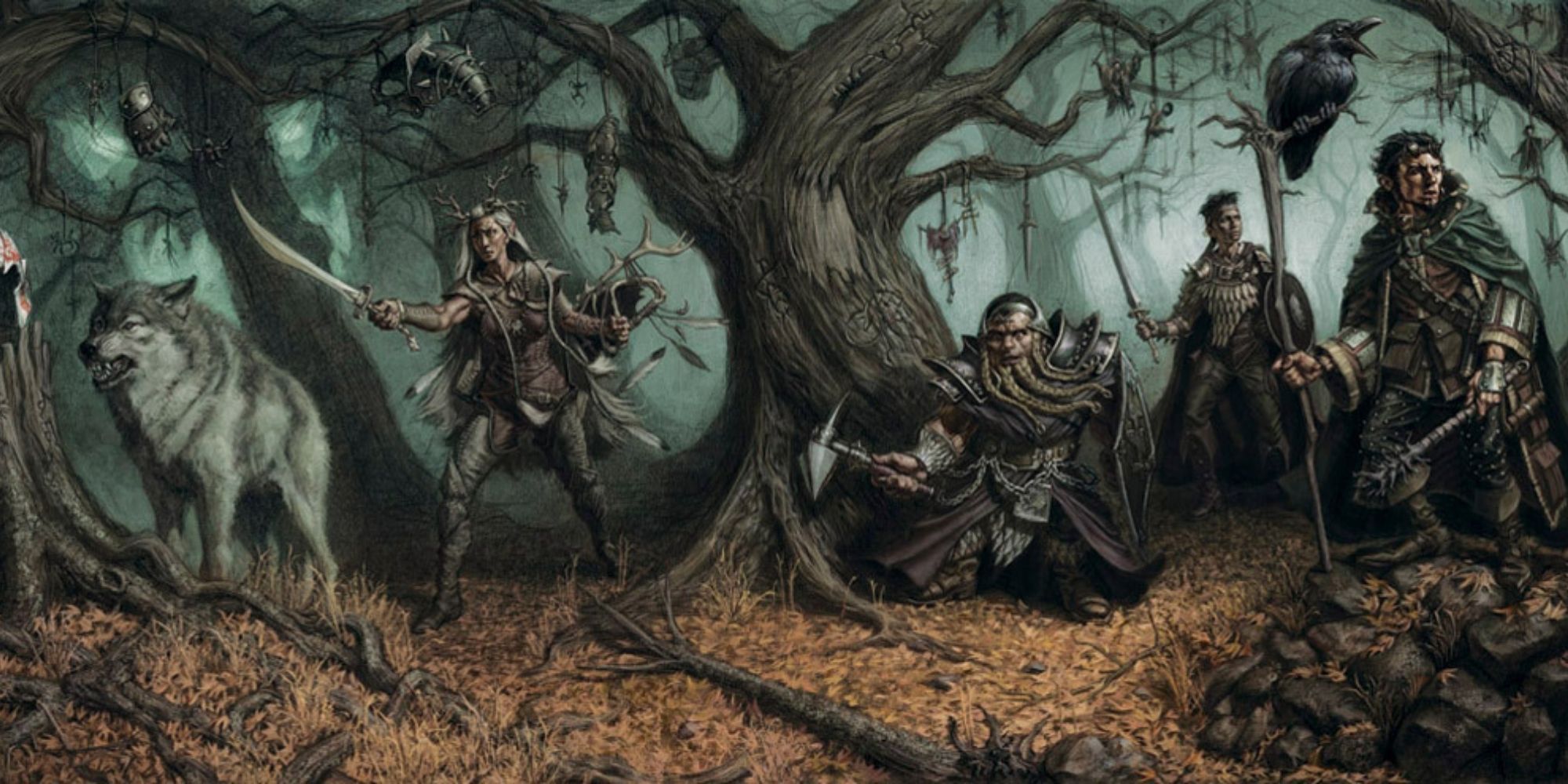Dungeons & Dragons has never been more popular than it is now. Over the past 50 years, it has evolved from a niche wargame to a pop-culture phenomenon. While it's debatable how it got there, this is largely due to the success of Fifth Edition. It makes the game much more accessible than previous iterations, while keeping the heart of the experience that has become synonymous with tabletop RPGs.
Just because Fifth Edition is successful, though, that doesn’t make it perfect. A lot was left on the cutting room floor when Wizards of the Coast finally released the game, including a lot of settings and rules that could enhance your adventures. Some of these sourcebooks are better left in the past, but some featured some very interesting concepts that could easily find their way into this latest edition.
9 Council Of Wyrms
Most players will only ever fight dragons in D&D, but in the Second Edition, TSR released a setting where you could actually play as one: The council of Wyrms. If you were tired of being a Thief or Fighter, you could always roll up a dragon and feel what it’s like to horde treasure or eat an entire flock of sheep.
Reportedly, the rules for being a dragon didn’t transfer very well to other settings, where a dragon PC would overshadow everyone else, but Io’s Blood Isles seems like they would be worthwhile including in Fifth Edition. Why worry about balance when you have the chance to play as one of the game's most iconic creatures?
8 The Epic Level Handbook
In Fifth Edition D&D, you can only go up to level 20 (potentially killing lots of rats in the process), but this wasn’t always the case. In both Second and Third edition, players had the opportunity to level from one to 40, gaining phenomenal powers and the opportunity to battle some of the strongest beings in the universe. Even Fourth Edition allowed players to reach level 30.
In 3.5, The Epic Level Handbook was your one-stop shop for creating characters whose powers rivaled the Gods. While the creators don’t seem to have any plans to make rules for these kinds of characters (instead focusing on epic boons), expanding Fifth Edition into the epic levels seems like a worthwhile endeavor.
7 The Book Of Vile Darkness
If you know anything about the 3.5th edition of D&D, you know that it offered a lot of sourcebooks, some of them better than others. While often overshadowed by books like the Fiendish Codex or Lords of Madness, the Book of Vile darkness was one of the most interesting and evocative sourcebooks ever released.
Whether you were looking to put your players through truly nightmarish worlds or create utterly horrifying villains, the book of Vile Darkness provided all the resources needed for the most metal version of D&D you could think of. It contained stats for all the archdevils and Demon Princes, and even included a new system of corrupt magic to terrify even the most hardened of players. Wizards also released the book in Fourth Edition, but so far there is no word on a possible reprint for Fifth.
6 The Book Of Exalted Deeds
What the book of Vile Darkness did for evil, the Book of Exalted Deeds did for good, detailing the often neglected seven heavens of Mount Celestia. It also included stats for various deities and angels who might either be friend or foe. All in all, it delved deeper into the nature of good in D&D, allowing for a more nuanced approach to the traditional (and very intricate and complex) alignment system.
Unfortunately, the Book of Exalted Deeds only received one release. However, as a resource for good aligned characters, or DMs scrounging up enemies for an evil aligned campaign, it was an interesting sourcebook that deserves a second look.
5 Expanded Psionics Handbook
Psionics divide D&D players. On one hand, who doesn’t want to split a goblin open using raw psychic energy? On the other, when rules for Psionics were released for 3.5, most people saw them as either game breaking or overpowered. If you’re a Wizard, you have to get material components and think about spell slots before you can cast anything. By the time you're done with all of that, your group's Psion has put a hole through an owlbear and is sitting down for a long rest.
The Expanded Psionics Handbook balanced these rules a bit, making Psionic classes more reasonable, and so less liable to cause party squabbling. There have been some hints at Psionic characters making their way into Fifth Edition in Unearthed Arcana, Wizards of the Coasts' official playtest rules, but a new release of the Handbook would allow for a whole wealth of possibilities to expand your campaign. If you’re lucky, you might even be able to explode a Kobold with the power of your brain.
4 Magic Of Incarnum
Released for Third Edition in 2005, Magic Of Incarnum upended the way that you used magic with the addition of soulmelds, soul-powered spells that worked a bit like magic items and gave your character powers never before seen in D&D. It also introduced a bunch of new races (as always, some fascinating homebrew ones can be added too) and three interesting new classes to the roster.
Like the Expanded Psionic Handbook, Magic Of Incarnum introduced an entirely different way of playing the game. Unlike Psionics, soul-powered magic never caught on, and this extremely well-balanced sourcebook never got an update. Maybe it was just too different, maybe it was just too bizarre, but with a new generation of players, Fifth Edition might be the perfect time to try it again.
3 Dark Sun
There are a lot of interesting settings in D&D, but none are quite as strange or cool as Dark Sun. Set on a post-apocalyptic alien planet, Dark Sun thrust you into a barbaric world ruled by evil sorcerer kings, where water is more precious than platinum. The setting was deep and evocative, more of a mixture of Fallout and Conan the Barbarian than the game you’re familiar with.
Unfortunately, Dark Sun never got a release beyond second and Fourth Editions, robbing you of the ability to use primal magic or play as a nomadic Psion, roaming the wastelands for the key to an ancient seal.
2 Heroes Of Horror
Playing D&D can be pretty terrifying, especially if you have a DM who takes pride in killing player characters. That’s what made Heroes of Horror such an incredible supplement: It turned the tension of a dungeon crawl into rules for truly horrifying your players.
Released for Third Edition, Heroes of Horror had it all, from class alternates to a mechanic that marked the touch of evil on your character. It also advised DMs on how to add elements of horror to the narratives of their games, allowing you to craft an entirely different kind of campaign. These rules could even complement the fantastic Ravenloft setting that Wizards released in 2021.
1 Dragonlance
Created by Margret Weis and Tracy Hickman, Dragonlance was a vibrant fantasy setting offering a unique spin on the traditional D&D formula. The supplement gave you the ability to play as a Kender, the series’ halfling-like race with no understanding of either fear or the rules of ownership, and introduced you to a world shattered by a cataclysm. More than anything, it was the series’ deep mythology that set the world apart; gods visited mortals and fought for control of the material plane.
Dragonlance was one of the most popular settings in early D&D, and got a sourcebook in nearly every edition from AD&D onward. This means different rulebooks in First, Second, and Third edition. Wizards has yet to announce an official supplement for Fifth Edition, but with a recent Unearthed Arcana dedicated to the setting, it's likely that adventurers will be able to return to the world of Kyrin soon.

